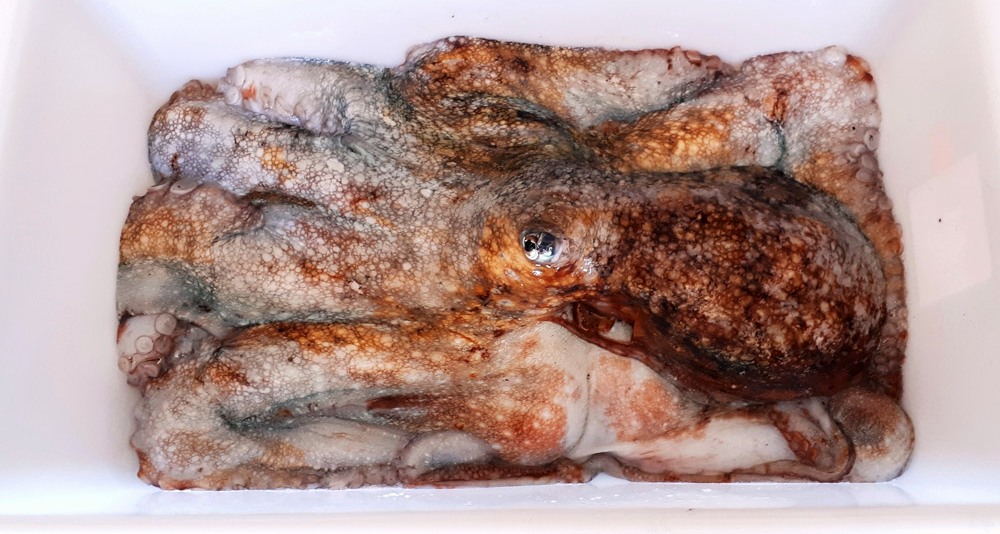
🧿It is very important to know! The octopus is a nocturnal predator. It can swim fast and move along the bottom. A master of camouflage. Continues to move and use its suction cups for another 30 minutes after its internal organs are ripped out. Has intelligence.
Unveiling the Mysteries of Octopus Hunting
Overview of Octopus Species
Octopuses are a fascinating and diverse group of marine animals belonging to the order Octopoda. They are found in oceans around the world, from the shallowest reefs to the deepest abysses. Octopuses are known for their intelligence, agility, and remarkable abilities, such as camouflage, ink release, and regenerating limbs. There are more than 300 known species of octopuses, ranging in size from less than an inch to over 16 feet.
Importance of Sustainable and Ethical Octopus Hunting
Octopus hunting is an important activity for many coastal communities around the world. It provides a source of income and food for many people, but it can also have negative impacts on the environment and the well-being of octopuses. Overfishing and destructive fishing practices can deplete octopus populations, leading to ecological imbalances and economic losses. Moreover, unethical hunting practices, such as using cyanide or dynamite, can harm other marine organisms and ecosystems, as well as human health.
To ensure the long-term sustainability and ethicality of octopus hunting, it is important to adopt responsible and science-based approaches. This includes respecting regulations and quotas, avoiding sensitive areas and seasons, using selective and non-destructive fishing methods, and minimizing bycatch and waste. It also involves educating and involving local communities, fishers, and consumers in conservation efforts, and supporting research and monitoring of octopus populations and habitats.
Research and Preparation: Gearing Up for Octopus Adventure
Ecological Importance of Octopuses
Octopuses play important ecological roles in marine ecosystems. They are apex predators that feed on a variety of prey, such as crabs, shrimps, fish, and even other octopuses. They help to control the populations of these organisms, which in turn affects the abundance and diversity of other species in the food web. Octopuses also serve as prey for many predators, such as sharks, seals, and dolphins. Their ability to camouflage and escape from predators contributes to the balance and resilience of the ecosystem.
Economic and Cultural Importance of Octopus Hunting
Octopus hunting has significant economic and cultural value for many coastal communities around the world. It provides a source of income and food for many people, especially in developing countries where other livelihood options are limited. Octopuses are also important in local cuisines and traditions, such as in Mediterranean, East Asian, and Polynesian cultures. Their unique and versatile characteristics, such as taste, texture, and appearance, make them popular ingredients in various dishes, from salads to stews to sushi.
Challenges and Risks of Octopus Hunting
Octopus hunting is not without challenges and risks, both for the environment and the hunters. Overfishing and destructive practices can lead to the depletion of octopus populations, affecting the balance and health of marine ecosystems. Moreover, the use of harmful chemicals or tools can damage habitats and other species, as well as the health and safety of the hunters themselves. The lack of regulation, monitoring, and enforcement can exacerbate these problems, leading to unsustainable and unethical practices.
Strategies and Solutions for Sustainable and Ethical Octopus Hunting
🧿To address the challenges and risks of octopus hunting, there are various strategies and solutions that can be implemented. These include:
- Implementing regulations and quotas: Governments and fisheries management organizations can establish and enforce rules and limits on octopus hunting, such as minimum size, season, and area restrictions. These regulations can help to prevent overfishing and ensure the sustainability of octopus populations.
- Promoting selective and non-destructive fishing methods: Fishers can use techniques that target octopuses specifically, such as handpicking, hook-and-line, or traps, rather than using indiscrim
- Avoiding sensitive areas and seasons: Fishers can avoid hunting in areas or seasons where octopuses are reproducing or spawning, in order to protect their populations and ensure their survival.
- Minimizing bycatch and waste: Fishers can use gear and methods that reduce the capture of non-target species and the amount of discarded or unused octopuses. This can help to conserve biodiversity and optimize the use of resources.
- Educating and involving local communities, fishers, and consumers: Awareness-raising campaigns, training programs, and participatory approaches can help to increase the knowledge, skills, and engagement of stakeholders in sustainable and ethical octopus hunting. This can also enhance the social and economic benefits of the activity, and strengthen the sense of ownership and responsibility.
- Supporting research and monitoring of octopus populations and habitats: Scientists and managers can conduct surveys, assessments, and experiments to better understand the biology, ecology, and behavior of octopuses, as well as the impacts of human activities on them. This can provide the basis for evidence-based decision-making and adaptive management.
Research and Preparation
Understanding Octopus Behavior and Habitat
Before embarking on any octopus hunting expedition, it is important to have a thorough understanding of the behavior and habitat of the target species. Octopuses are intelligent and adaptable creatures that have evolved a variety of strategies for survival, such as camouflage, escape, and aggression. They are also sensitive to changes in their environment, such as temperature, light, and currents.
To increase the chances of success and minimize harm to the octopuses and the environment, hunters should study the biology, ecology, and behavior of the species they are targeting. This can include researching scientific literature, consulting with local experts, and observing the octopuses in their natural habitat. It can also involve learning about the food preferences, activity patterns, and reproductive cycles of the octopuses, as well as the potential threats and vulnerabilities they face.
Identifying Legal and Ethical Guidelines for Catching Octopuses
Octopus hunting is subject to various legal and ethical guidelines, depending on the location and context. It is important to identify and respect these guidelines in order to avoid legal penalties, environmental harm, and social conflicts.
Legal guidelines can include regulations on the size, season, and area of octopus hunting, as well as the types of gear and methods that are allowed. These regulations are designed to ensure the sustainability of octopus populations, as well as the safety and welfare of hunters and other marine organisms.
Ethical guidelines can include principles of respect, empathy, and non-harm towards the octopuses and their habitat. These guidelines are based on the recognition that octopuses are sentient beings that deserve consideration and protection, and that their hunting should be conducted in a way that minimizes suffering and maximizes their welfare.
Appropriate Gear and Equipment
Choosing the appropriate gear and equipment for octopus hunting is crucial for the success and safety of the activity. Different species of octopuses require different types of gear and methods, depending on their size, behavior, and habitat.
Common gear and equipment for octopus hunting include spears, hooks, traps, and nets. Hunters should select gear that is appropriate for the target species and the legal and ethical guidelines, and that is effective and reliable in capturing the octopuses. They should also ensure that the gear is maintained and stored properly and that it does not cause unnecessary harm or damage to the environment and other species.
🧿In addition, hunters should have the necessary safety equipment and skills to avoid accidents and emergencies. This can include wetsuits, snorkels, dive masks, and first aid kits. They should also be aware of the risks and hazards associated with octopus hunting, such as hypothermia, entanglement, and decompression sickness, and take appropriate precautions to minimize them.
Locating an Octopus: Mastering the Art of Octopus Spotting
Recognizing Octopus Habitats
One of the most important skills for octopus hunting is recognizing the habitats where they are likely to be found. Octopuses are elusive and can be difficult to spot, but they tend to prefer certain types of environments that provide shelter, food, and camouflage.
Rocky shorelines are one of the most common habitats for octopuses. They offer a variety of hiding places, such as cracks, crevices, and boulders, where octopuses can retreat and blend in with the surroundings. Rocky shorelines also provide ample food sources, such as crabs, shrimps, and small fish, which attract octopuses.
Crevices and dens are other popular habitats for octopuses, particularly in deeper waters. Octopuses often excavate their own dens in the sand or gravel or occupy existing ones left by other animals. These dens provide a safe and stable place for octopuses to rest and hide, as well as to lay their eggs.
Spotting Signs of an Octopus
Even if octopuses are well-hidden, there are several signs that can help hunters detect their presence. One of the most common signs is ink trails, which are dark streaks left by the ink sacs of octopuses when they feel threatened or disturbed. Ink trails can be seen on rocks, sand, or water, and can indicate the direction and proximity of the octopus.
Another sign of octopus presence is discarded shells, such as crab or clam shells, which octopuses use as a shelter or as a sign of their territory. Discarded shells can be found near crevices, dens, or rocky areas where octopuses live, and can provide clues about the size and activity of the octopus.
🧿By recognizing octopus habitats and signs, hunters can increase their chances of finding and capturing octopuses, while minimizing disturbance and harm to the environment and other species. It is important to remember, however, that octopuses are sensitive and intelligent creatures that deserve respect and care, and that their hunting should be conducted in a responsible and ethical manner.
Catching Techniques: Getting a Grip on Octopus Capture Methods
Hand Capture Method
The hand capture method is one of the most traditional and low-impact ways of catching octopuses. It involves approaching the octopus slowly and calmly and using the hands to gently grab the mantle or head of the octopus. This method requires patience, skill, and knowledge of the behavior of octopuses, as well as a good sense of timing and safety.
To approach the octopus, hunters should avoid sudden movements or loud noises that can startle or agitate the octopus. They should also be aware of the direction and speed of the water currents, as these can affect the movement and position of the octopus. Once they are close enough to the octopus, they should use their hands to grasp the mantle or head of the octopus, being careful not to harm or stress the animal.
Using a Spear or Pole
Spearfishing is another common technique for catching octopuses, particularly in deeper waters or areas with low visibility. It involves using a spear or pole to impale the octopus and secure it for retrieval. This method requires a combination of physical strength, aim, and accuracy, as well as a proper understanding of the anatomy and behavior of octopuses.
To effectively spear an octopus, hunters should aim for the head or mantle of the animal, and make sure to deliver a quick and humane kill. They should also use a spear or pole that is appropriate for the size and depth of the water, and that is sturdy and sharp enough to penetrate the flesh of the octopus.
Using Traps and Nets
Traps and nets are alternative methods for catching octopuses that do not require physical contact or force. They involve setting up and positioning a device that lures or captures the octopus, and then retrieving it from the device. This method requires knowledge of the behavior and preferences of octopuses, as well as a proper selection and preparation of the traps and nets.
Traps can include pots, cages, or boxes that are baited with food or scent, and that allow the octopus to enter but not exit. Nets can include hoop nets or gill nets that are cast or placed in areas where octopuses are likely to swim or forage, and that entangle the octopus in their mesh. Both traps and nets should be designed and positioned in a way that minimizes harm or injury to the octopus, and that avoids catching other non-target species.
Safety Considerations: Navigating Octopus Hunting with Caution
Avoiding Harmful Species
Octopus hunting can pose various risks and dangers to hunters, particularly if they come into contact with harmful or aggressive species. It is important to be aware of the types of species that can cause harm, such as venomous fish, jellyfish, or sea urchins, and to take appropriate precautions to avoid or treat injuries.
To avoid harmful species, hunters should familiarize themselves with the local marine fauna and flora, and seek advice from experts or locals about the potential risks and hazards. They should also wear protective gear, such as gloves, boots, or wetsuits, that can reduce the exposure and impact of harmful species.
Handling an Octopus Safely
Handling an octopus can also be risky, both for the octopus and the hunter. Octopuses have powerful beaks and arms that can cause injury or damage, and they can also release ink or other substances that can impair vision or breathing.
To handle an octopus safely, hunters should use appropriate techniques and gear, such as gloves or towels, that can provide grip and protection. They should also avoid applying excessive force or pressure on the octopus, and release it quickly and gently after capture. It is also important to be aware of the size and behavior of the octopus, as larger or more aggressive individuals can pose more risks.
Being Aware of the Environment and Other Marine Life
Octopus hunting takes place in dynamic and diverse marine environments that are inhabited by various species of marine life. It is important to be aware of the environment and the other species and to avoid causing harm or damage to them.
To be aware of the environment and other marine life, hunters should observe and respect the natural rhythms and patterns of the ecosystem, and avoid disturbing or damaging the habitats and species. They should also avoid using gear or methods that can cause unnecessary harm or bycatch, and dispose of their waste and equipment properly. Additionally, hunters should be aware of the regulations and guidelines that apply to the area or the activity, and follow them accordingly.
How To Catch Octopus – Best Ways To Catch Octopus
Earlier we have already introduced you to catching squid. In this article, we’ll tackle larger and heavier prey and talk about catching an octopus.
All over America, you can find a lot of these delicious and graceful shellfish, and not taking advantage of the opportunity to catch at least a couple of them is a big mistake.
After reading this article to the end, you will understand that catching an octopus is not a very difficult activity and you will learn how to quickly and easily catch an octopus in various ways.
Easiest Ways To Catch an Octopus
Although octopuses come in many different species, there are many ways you can catch them regardless of the species. We have listed many of them below.
Rod With Net End
A very popular way to catch an octopus is with a rod, at the end of which there is a net with a fish inside. The technique is as simple as the day – you simply insert the rod into dark and protected corners where the octopus can hide, it clings to the net without shelter, and you simply drag the octopus to the surface.
If you are going to catch a lot of octopuses, then you can take some special net cages and line them up. Their peculiarity is that the octopus will see the fish and climb into the cage from above, but will no longer be able to climb back out. Easy prey for you. You can lift and leave these cages all day long and have a very good catch by the end of the day.
Catching Octopus With Pots or Traps
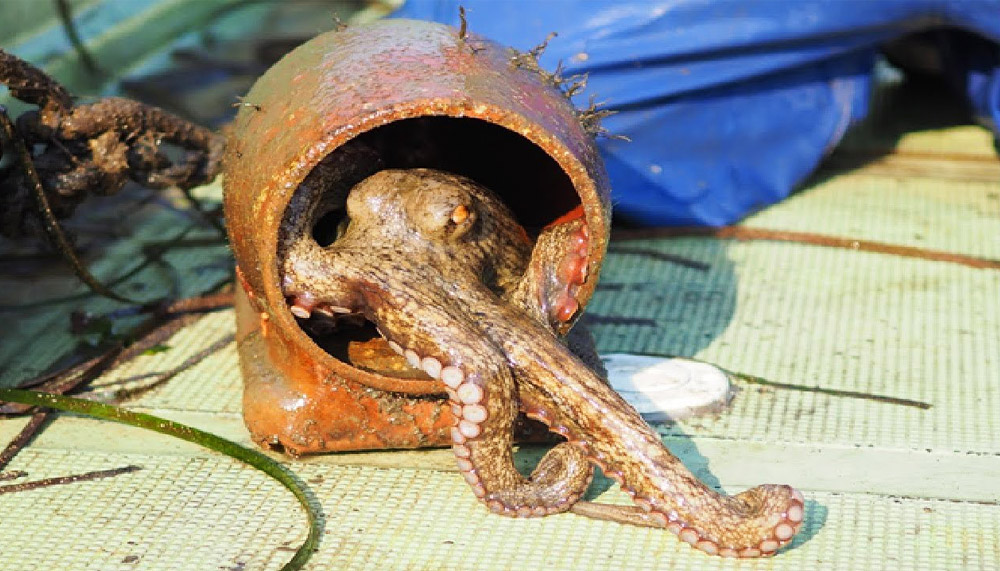
One of the oldest and most traditional ways to catch an octopus. Nevertheless, it is very effective and works to this day.
First of all, you need to decide on the type of pots and choose the one you need. Depending on the type and size of the octopus, you will need different pots. You can check it online or call your local fishing store to find out what size pot you need depending on which octopus species you are. Dozens of different pots are now available in stores, ranging from classic earthenware to modern traps.
After choosing and purchasing the pots, you need to tie them with a rope. Be sure to use a strong knot to avoid losing the pots. If you are using multiple pots, be sure to tie them together with a rope a few yards apart to cover a larger area at the bottom. If you don’t have a lot of experience fishing with pots, tie them up before getting on the boat, because it will be much more difficult to do this on the waves.
The next step will be to get the boat to the water and install the pots. Choose a location where there is plenty of fish and where the squid can lurk to hunt them. A fish finder can help you a lot with this. Coral reefs and rock are excellent pitcher locations.
Then, throw the pots into the water, spreading them out so that they are in the same place, or inline if you have knitted them. Make sure afloat is tied to your line so you can easily find your traps when you decide to retrieve them.
Then you just have to wait for the octopus to climb into the pot. It is difficult to determine when the pot is ready to be removed, so we advise you to wait a long time before doing this. It can take a couple of hours or a whole week, so it’s up to you how careful to be in this moment.
When lifting the pots, make sure that the octopus does not exceed the size and weight allowed in the area. Also, remember that you are catching a live octopus and you need to prepare storage space before you take out the pot. When you raise the pots to the surface, you need to be as careful and quick as possible, as octopuses are very quick to leave and can easily escape.
🧿I caught 3 monster OCTOPUS with crab pots!
Spears or Speargun
Here, as with the pots. First, you need to decide which spears or speargun you want to use for the octopus. Different types of spears and spearguns are used in different regions and for different octopuses. How to choose a spear gun for hunting, you can read our post.
Then you need to choose a dive site. The depth to which the octopus descends is often shallow, so both beginners and experienced divers can catch it with the help of spearfishing. From the places, it is better to choose a reef or a rocky bottom, where octopuses like to arrange a den for themselves. Drop anchor on the boat and dive. But before that, carefully study the legislation of your state or region, as some of them are very protective of their inland waters.
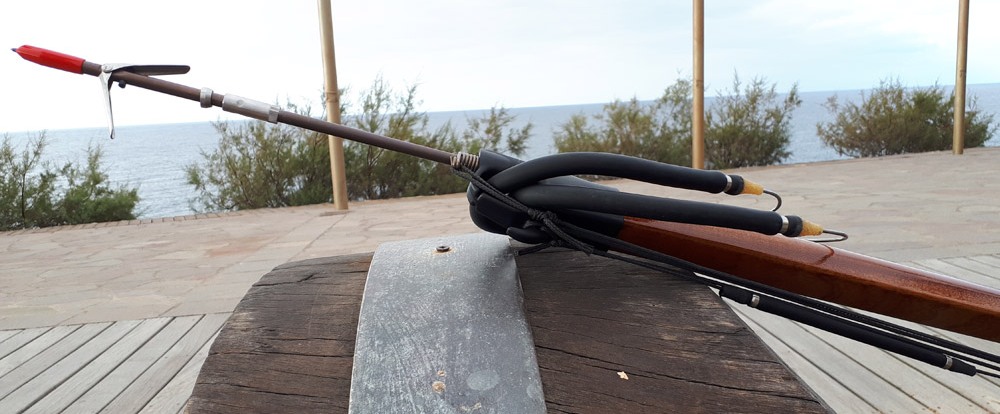
Then you need to find the octopus. Look at the bottom to see if there are broken crab or cancerous shells or shellfish body parts. Octopuses often like to dwell in snags and crevices, so be doubly careful when you find such places.
Before using the spear, it is better to lure the octopus out of your hiding place. Poke around the cover with the spear until the octopus starts grabbing the spear or running away. Once the octopus is within your reach, thrust a spear into it or fire a spear gun. Aim in the area between the eyes so as not to make the animal suffer and kill it quickly. Do not forget that you can always miss, so carry a knife on your belt so that you can always kill the octopus if you lose your arrow or spear. We also recommend that you carry a hook with you so that you can tear off the octopus since after the shot the octopus spreads its limbs and sticks to them.
🧿Amazing Hunting Giant Octopus Underwater!
Spoon or Jig
This method is not very common for catching an octopus, as it is quite difficult and causes much more problems than other methods. But if you have a strong line and rod, this is doable.
The brighter the color of your jig or spoon, the more likely the octopus will grab it. We recommend using red, orange, or yellow. As soon as you feel a jerk, do not immediately pull the bait to the surface. Most likely, the octopus is just holding on to the line but has not yet had time to fix itself well. Play with bait before pulling out the octopus.
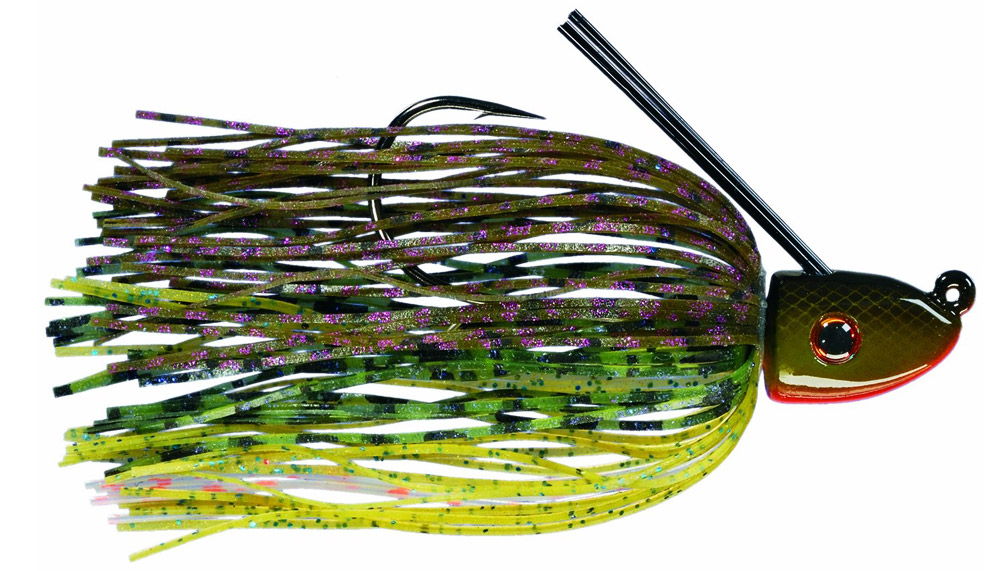
But catching an octopus is only half the trouble. You also need to pull it to the surface, which is very difficult, since the octopus often breaks off and falls back into the water. As soon as you get it out of the water, get some kind of net ready, because octopuses will very easily escape from the boat.
How to Catch an Octopus with a Fork
Many fishermen catch octopus with a regular fork. The essence of this method is that you bend the teeth on the fork so that it looks like a small, thick hook. Then you tie your fork to a strong line and stick the light-colored cloth or bag 1 to 2 inches above the fork. So that the design looks like a small octopus or squid. A fishing rod is not necessary here, many fishermen cast and pull the line with their hands. Some fishermen also fork pieces of chicken or crab meat onto a fork.
After that, you need to lower your fork bait to the bottom in a secluded place where the squid can hide. Then the process is as simple as possible – you just wait for the squid to grab your bait and pull the line with the prey.
🧿How to Catch an OCTOPUS With a Fork – How to Fish From the Shore With a Fork
Diving with a Gaff
Many divers use gaffs instead of spears or spear guns. A gaff is a long pole with a thick hook at the end. Divers insert this rod into the secluded places where the octopus is hiding and pull it out of the shelter. You can attach chicken or crab meat to the end of the hook.
How To Catch Octopus With Chicken
Chicken legs are also used to catch octopuses. Their essence is that you attach hooks to a small bar or rod, wrapping them with a rope, and then attach the chicken legs with the same rope. Then this rope or line is lowered to the bottom and the octopus very willingly and quickly grabs your device with the bait. This is a very cheap but effective way to fish for octopus.
🧿How to Catch Octopus with Chicken Legs
How To Catch Octopus With Large Hooks
This method, like the previous one, will require almost nothing from you. All you need to do is find a large hook and a pair of ropes. Its essence is that you put the tentacles of a squid, an octopus, or just a few ropes on a large hook. Then you attach this hook to a sturdy line or rope and attach it to a long pole. Then, at low tide, bustle a hook into crevices, burrows, under rocks or stones. The octopus will grab your bait with almost 100% probability and you can easily get it to the surface.
Lures & Bait For Catching Octopus
One of the favorite treats of octopuses is crab meat. If you are not going to use live fish or other octopus, then crab meat is a great bait. The only drawback of this bait is the lack of bright and shimmery colors that could attract an octopus-like fish. But if you can get the bait close enough to the octopus’s lair, you can be sure that it will grab your bait very quickly.
Any live bait is also a great choice. Octopuses are very fond of eating smaller fish and live bait will give you more advantages over other anglers. The good thing about live bait is that it moves just like a regular fish and attracts the attention of an octopus. You do not need to spend as much energy on the game as you spend with jigs or spoons.
If you are using artificial bait, try brightly-colored baits that can reflect the sun’s color. The shiny and vibrant lures are great for capturing the attention of any octopus you come across.
Where Can You Find An Octopus?
The octopus will not hide in rivers, ponds, and lakes, since the octopus is a marine species and is found only in the seas and oceans. Octopuses often like to hide in low tide areas, chasing crabs or fish that are trapped by the tide. Also, if you find a large cluster of mussels, then most likely an octopus will hunt nearby, as they are very fond of mussels. At low tide, octopuses can be easily found on the rocks, and at high tide, in dark places.
Octopuses are very fond of shallow water, as there is a lot of food and it is simply easier for them to find food there. In fact, the octopus climbs into deep regions only when the raging water does not allow it to remain on the rocks or near the coast. Therefore, on days with high and violent waves, you are unlikely to find octopuses in your favorite places. During the breeding season, you can find rocks filled with whole clusters of octopuses.
There are two very good spots that attract the attention of octopuses. The first is the border of stones with sand since their octopuses look for crustaceans, mollusks, cuttlefish, etc. The second is rocky areas with a lot of seafood like mussels and shells. In remote and little-known areas, you can find dozens, if not hundreds, of octopuses. Especially if there is a lot of food for them.
Storing and Transporting the Catch: Safeguarding Your Octopus Prize
Proper Storage Methods
Once octopuses are caught, they should be handled and stored in a way that ensures their freshness, quality, and safety. Improper storage can lead to spoilage, contamination, or damage, which can affect the taste, texture, and health of the octopuses.
To store octopuses properly, hunters should clean and gut them as soon as possible after capture, and rinse them with clean water to remove any dirt or debris. They should then store them in a cool and dry place, such as a cooler or a refrigerator, and cover them with a damp cloth or paper to prevent dehydration. The octopuses should also be kept away from other food items, and preferably in a separate container or bag.
Transporting the Octopus Safely and Humanely
Transporting octopuses from the hunting site to the final destination can also pose various challenges and risks, particularly if the distance or the conditions are unfavorable. It is important to transport octopuses safely and humanely while maintaining their quality and freshness.
To transport octopuses safely and humanely, hunters should use appropriate gear and equipment, such as insulated bags or containers, that can keep the octopuses at a cool and stable temperature. They should also avoid overcrowding or stacking the octopuses, which can cause damage or stress to the animals. Additionally, they should try to minimize the duration and frequency of transportation and ensure that the octopuses are protected from extreme temperatures, humidity, or physical impact.
Preparing and Cooking the Octopus: From Ocean to Plate with Style
Cleaning and Preparing the Octopus
After the octopus has been caught and stored, it needs to be cleaned and prepared before cooking. This involves removing the head, eyes, beak, and internal organs, as well as washing the flesh thoroughly.
To clean and prepare the octopus, hunters should first remove the head by cutting it off at the base of the arms. They should then remove the eyes and beak by cutting around them and pulling them out. Next, they should cut open the mantle and remove the internal organs, including the ink sac, stomach, and liver. Finally, they should rinse the flesh thoroughly with cold water to remove any remaining debris or blood.
Various Cooking Methods and Recipes
Octopus is a versatile and flavorful seafood that can be cooked in a variety of ways, depending on personal preference and cultural traditions.
🧿Some of the most popular cooking methods for octopus include grilling, boiling, frying, and stewing.
- Grilling octopus is a popular method that enhances the natural flavor and texture of the flesh. To grill octopus, hunters should first blanch it in boiling water for a few minutes to tenderize it, and then brush it with oil and seasonings. They can then grill it over high heat, turning it occasionally, until it is charred and crispy on the outside, and tender and juicy on the inside.
- Boiling octopus is another common method that is often used in soups, salads, or stews. To boil an octopus, hunters should first clean and prepare it, and then place it in a pot of boiling water with aromatics, such as garlic, onion, or bay leaves. They should then reduce the heat to a simmer, and cook the octopus for 30 minutes to an hour, depending on the size and thickness. The octopus is done when it is tender and easily pierced with a fork.
- Frying octopus is a less common but flavorful method that can be used for small or chopped pieces of octopus. To fry octopus, hunters should first coat it in a batter or flour mixture and then deep-fry it in hot oil until it is golden and crispy. The fried octopus can then be served with dipping sauces or as a snack.
- Stewing octopus is a method that is often used in Mediterranean or Asian cuisines and involves cooking the octopus slowly in a flavorful broth. To stew an octopus, hunters should first clean and prepare it, and then sauté it with aromatics, such as onions, carrots, or celery. They should then add a liquid, such as wine, stock, or tomato sauce, and simmer the octopus for a few hours until it is tender and infused with the flavors of the broth.
FAQ
Summing Up: Conquering the World of Octopus Hunting Responsibly
In conclusion, catching an octopus requires a combination of knowledge, skill, and respect for these intelligent and fascinating creatures. By understanding their habitats and behaviors, choosing the right equipment, and employing safe and humane catching techniques, it is possible to successfully catch an octopus for research, education, or culinary purposes.
However, it is crucial to always adhere to local laws and regulations regarding the capture and handling of octopuses. This includes being mindful of size, species, and permit restrictions to ensure the sustainability and preservation of these marine animals. Furthermore, safety should always be a priority when interacting with octopuses. Using gloves and exercising caution with venomous species can minimize the risks involved in catching these remarkable creatures.
Ultimately, learning how to catch an octopus is not only about the act of catching them but also about fostering a deeper appreciation and understanding of these unique animals. As we continue to explore the world of octopuses, it is essential to remain mindful of our impact on their natural habitats and to promote responsible practices that protect their populations and the marine ecosystems they inhabit.
We hope that our guide was useful to you and now every octopus will know what you should be wary of. Yes, catching it is not an easy task, but thanks to the many available methods, you can try each one and choose the most convenient and suitable one for you.

I live in Tenerife (Canary Islands) for the last 10+ years and share my daily fishing experiences on my website. Many years of personal experience as a fisherman and the vast experience of my friends allow me to write professionally on any fishing topics (from choosing a flashlight and equipment to deep-sea fishing).
All of my advice is based on practical real-world experience and will be useful to both novice anglers and professionals. Read more about the author.
Affiliate Disclosure: FishReeler.org sometimes gets paid for listings, through sponsors or affiliate programs like Amazon, Ebay, Cabelas, Bass Pro Shop, Shimano, Daiwa, Rapala, Renn, Okuma, KastKing, etс. Clicking a link helps keep FishReeler.org free, at no extra cost to you!
About the author: Each article is verified by the fishing expert Sergio Smirnoff. The articles are written by professional and amateur fishermen with 20+ years of fishing experience.
Note: The views and opinions expressed in this article are those of the authors and do not necessarily reflect the official policy or position of any agency. The articles are for informational purposes only, share your opinions in the comments and join the fishing discussions, let's share our fishing experiences together!

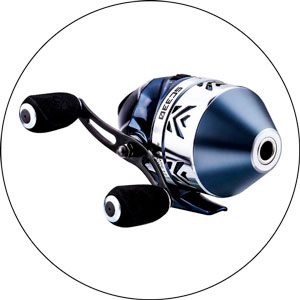
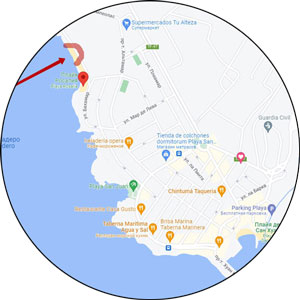

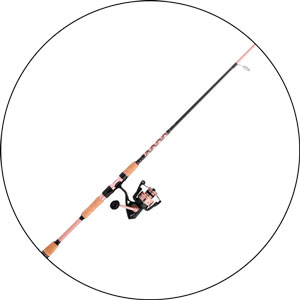
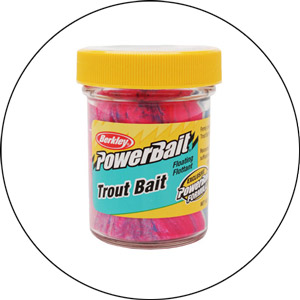
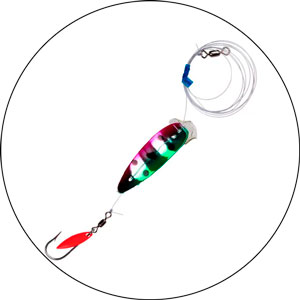
Your ways of catching octopuses are understandable. I have caught octopus more than once from a boat on a fishing hook, or from the shore on a soft wobbler and often without a telescopic net, I have lost my prey. The octopus would perform last-minute actions (before being pulled completely out of the water) that allowed it to break free and escape. He is adept at clinging and resisting. If it weighs more than 1 kg, you need a net to get it out. Many fishermen collect small octopus at low tide in shallow water. This is barbaric. Catch only large specimens. Octopus is easy to cook and delicious to eat (pure protein).
Catching an octopus is indeed one of the most challenging tasks in the game. I’d suggest using a trap bobber for the best results. However, if that doesn’t work out for you, a cork bobber or lead bobber might also be helpful alternatives. Good luck!
To maximize your fishing experience, I recommend using an iridium rod, a trap bobber, and consuming seafoam pudding. Make sure to bring a few seafoam puddings to the beach to maintain the buff throughout your fishing session.
The octopus is one of the most challenging fish to catch, apart from the legendary fish. If you haven’t tried this yet, consider grabbing a beach warp totem pole before going to bed. In the morning, use it right away and dedicate your entire morning until 1 pm to fishing. Catching an octopus is difficult, both in terms of hooking and reeling it in, so be prepared to spend multiple mornings on this task until you succeed. Remember, catching an octopus is now your top priority.
I’d like to share some experiences of catching octopuses in California, particularly in San Diego. There, we often encounter smaller octopuses, and although they can bite, they usually spend more time trying to escape. Wearing gloves should provide adequate protection. To subdue them, aim for the spot right between their eyes, and you’ll know you’ve hit the right spot when their color dramatically changes and they stop moving. Once that’s done, you can simply poke a hole and put them on a stringer. Be cautious, as seals are particularly attracted to octopuses.
On a personal note, although I used to catch a fair number of octopuses, I’ve come to appreciate their intelligence and tend to leave them alone now. If you handle them gently, they may even become curious about you. Cleaning and processing an octopus can be quite challenging if you want to avoid a rubbery texture. In the documentary “Jiro Dreams of Sushi,” the chef massages an octopus for about two hours to tenderize it. Some people also suggest blanching them with wine corks to break down the texture. I’ve tried tenderizing with a mallet and frying, but it’s a lot of work for a rare treat.
I’m not discouraging you from catching octopuses, but I encourage you to interact with one another and consider the effort involved in preparing it before making your decision.
Living in Italy, it’s common to find octopuses near the rocks above the water level, so one option is to bash them against the rocks to catch them. If that’s not possible, inserting a knife deep into the octopus’s mouth could also work. Some people might find it challenging to muster the courage to try the biting method, as it can be intimidating to put a live octopus so close to one’s face.
A common misconception that many people have is that specific fish spawn only in certain areas. However, the truth is that any location within the “beach” area has the same spawn rate for all fish, even in the small river section above the bridge to the tide pools. Catching an octopus can indeed be quite challenging, as some players have even taken a whole week to find one in their game saves.